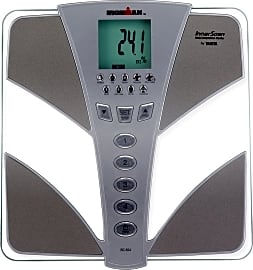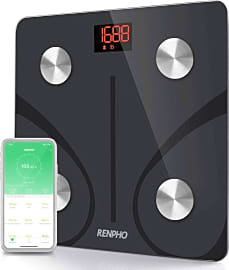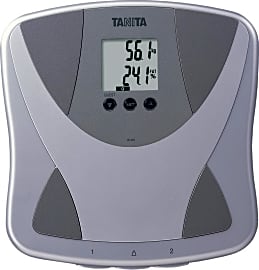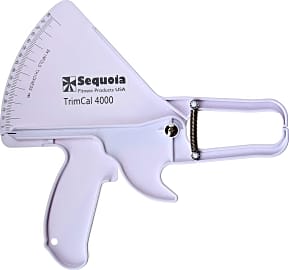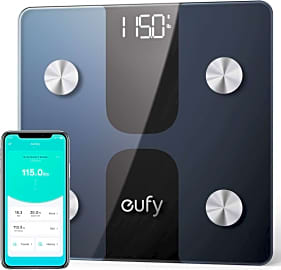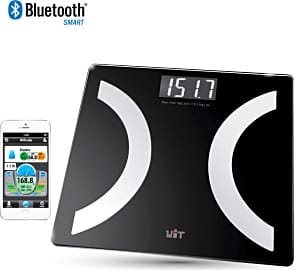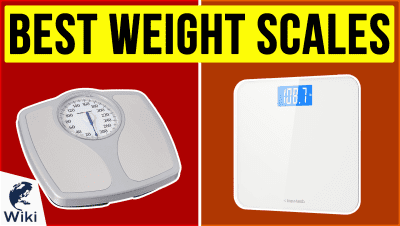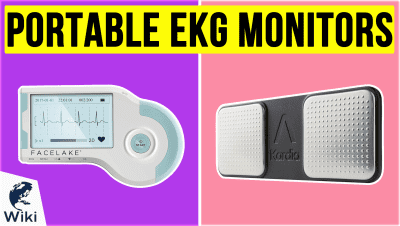The 10 Best Body Fat Monitors

This wiki has been updated 38 times since it was first published in July of 2015. Although knowing how much you weigh can help you attain and maintain a healthy physique, body fat percentage can provide a more accurate representation of your fitness status. We have assessed and ranked a diverse selection of devices, some high-tech, some not so much, that will provide you with all the data you need to make healthy decisions on a daily basis. Many offer apps to make it easy. When users buy our independently chosen editorial picks, we may earn commissions to help fund the Wiki.
Editor's Notes
March 23, 2020:
While a lot of the models on our previous list have remained, we saw fit to add a couple of modern offerings, like the Taylor Precision Products Composition, whose carbon fiber finish and large, backlit display make a fine bathroom companion. In particular, its daily calorie recommendations can set you on a simple, effective path toward weight loss or gain, depending on your goals.
To make room for some of these new models, we lost the GoWise USA, which was a total battery hog, and the Singer Tape Measure, which seemed a little too stone-age compared to the other possibilities out there, many of which aren't so expensive that you'd feel the need to return to something so rudimentary.
We saw a couple of upgrades here, as well, with the Omron Fitness Composition and the Eufy Smart Scale C1. Neither has been perfected by their respective companies, but while most scale-type monitors on the market use a bioimpedance current essentially running from one foot through the body and out through the other foot, the Omron model combines electrode contacts on the feet and hands, theoretically maintaining a more consistent voltage from beginning to end, so there's a better chance for accuracy.
Who Needs A Body Fat Monitor?
Regularly checking a body fat monitor can give these users a sense of progress towards their goals.
The government-recommended traditional assessments for body mass are very broad, and do not offer the kind of accurate results that many people want. They are designed more for the statistically average person rather than the actual individual. Things like waist circumference and body mass index can point a person in the right direction, but if they truly care about their body fat percentage, they will use a body fat monitor.
Many athletes use body fat monitors to keep within their optimum levels. These optimum levels are largely determined by where their peak performance range is. For instance, endurance athletes have a lower body fat number, as their focus is on lean muscle and a light frame. Olympic weightlifters will have a higher BMI, as their focus is more on strong mass over lean muscle. Body fat monitors may also be used by physically fit individuals looking to perfect their diet and exercise routine and stay at their physical peak.
People looking to lose weight will often find a body fat monitor inspiring. A traditional weight scale shows only a person’s weight. This can be disheartening, as a new workout routine is likely to cause no change at first as the body adjusts to the new routine. Even though the body is creating more muscle fibers and burning fat stores, looking at an unchanged number on the scale is enough to make some people quit.
The scale will eventually show the positive effects of a workout routine and diet plan, but it can be difficult to stay inspired at first. On the other hand, a body fat monitor gives the user a picture of their fat to weight ratio in real time. Less fat means more progress towards body mass goals, regardless of overall weight at the outset. Regularly checking a body fat monitor can give these users a sense of progress towards their goals.
Different Types Of Body Fat Monitors
Body fat monitors can vary from simple to extremely elaborate. Likewise the results they give may vary from a general range to an extremely accurate number. Most consumer body fat monitors are meant to give a person the near-precise range of their body fat percentage, as results may vary depending on a few different factors. There are multiple types of fat monitors. Handheld body fat monitors are devices with electrodes for each hand. These use bioelectrical impedance to determine body fat in relation to lean mass. This technology is also found in advanced floor scales that can give the user an idea of body fat percentage, weight, and even bone mass. Skin calipers are the most common method of measuring body fat. These devices are used to pinch the tissue in key areas of the body. The thickness at each site is recorded and used to determine levels of body fat in these areas, which gives an idea of body fat percentage on the whole.
Handheld body fat monitors are devices with electrodes for each hand.
Doctors may use more elaborate body fat monitors to get their results, which means the information they collect is usually very accurate. Doctors may check for a patient’s body fat using a process called hydrodensitometry. The process is based on Archimedes’ principle of buoyancy. The patient is first weighed normally using an office scale. They are then lowered into a small tank of water using a chair that will emerge their entire body in water. The amount of water displaced helps determine body density and fat content.
Doctors may also use an air displacement plethysmograph to determine body composition. The patient sits inside an egg-shaped chamber during the test. The machine then measures the volume of the person by how much air they force out of the plethysmograph. ADP is based on much the same equation as hydrodensitometry, but adjusts for air displacement rather than water displacement.
Doctors may also request special forms of imaging tests to help determine body mass and body fat percentage. Dual energy x-ray absorptiometry is a specialized x-ray that helps determine the ratio between muscle, bones, and fat within the body. Body fat can be estimated using more familiar imaging tests, like CT scans and MRI, as well. These scans create the best picture of the inside of the body and give the most accurate readings of body fat. They are also very expensive, and are generally not used to simply measure body fat.
Is Body Fat Monitoring Important?
Using a body fat monitor as a way to track body fat percentage is an important aspect of health, as body fat has a direct impact on overall well-being. Some fat is necessary to insulate the body and provide energy to the cells. Too much body fat can put a person at risk for obesity and related disorders. Excess weight may put a person at risk for circulatory conditions like high blood pressure, heart disease, and strokes. Weight loss can help lower blood pressure alongside other lifestyle and dietary changes. Maintaining a lower blood pressure reduces the risk for stroke. Losing even a small amount of body fat may lower the chances of developing heart disease.
This process can help control weight gain or improve weight loss over time.
The incidence of kidney disease and Type 2 diabetes is also higher in the obese population. Fatty liver disease has a direct correlation to obesity as well, with damage to the liver being noticed as early as childhood. Higher levels of body fat are also associated with increased risks for a number of cancers. This includes cancers of the kidney liver, pancreas, gallbladder, colon, and rectum. High BMI, large waist circumference, and rapid weight gain are all associated with a higher incidence of breast cancer in postmenopausal women, as well. Weight loss can positively affect the outlook for all of these disorders in many cases.
The important thing to consider is that weight gain and body fat are largely determined by modifiable risk factors. This means things like physical inactivity and excess energy intake have a direct influence on obesity levels. Body fat should be monitored regularly to determine if actions need to be taken to reduce a person’s energy intake or increase their level of exercise. This process can help control weight gain or improve weight loss over time.



